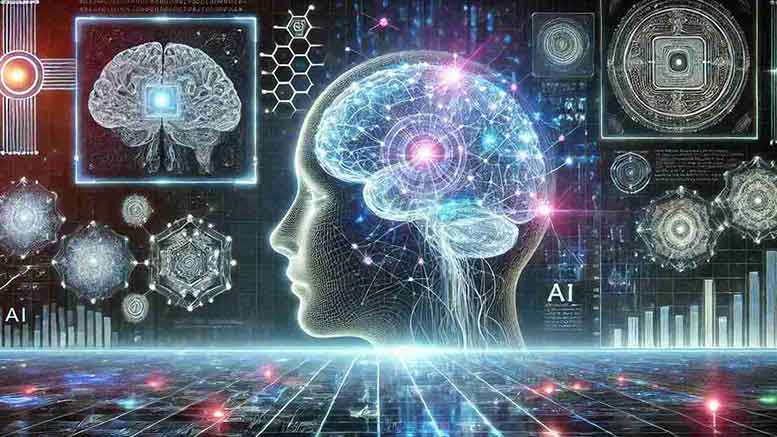Unlocking Human-Like Intelligence: How AI is Learning to Think Like Us!
ai learning think like humans
How AI Learns to Think Like Humans
From Einstein’s renowned thought experiments to the self-correcting prowess of AI models, the concept of thought-based learning extends beyond human cognition and permeates artificial intelligence.
New investigations unveil how AI, much like humans, assimilates knowledge through explanation, simulation, analogy, and reasoning, without the need for external stimuli. This ability to learn on-demand, crucial for adapting to evolving contexts, uncovers both the parallels and distinct differences between natural and artificial cognition. It offers a novel framework to explore the intricacies of human thought and the potential as well as the constraints of AI.
Learning Through Thought: Humans and AI
Some of history’s most groundbreaking discoveries have emerged not solely from observation, but from deep contemplation. Einstein’s theory of relativity was borne out of mental experiments, while Galileo’s understanding of gravity came from mental simulations. A recent review, published on September 18 in Trends in Cognitive Sciences, suggests that this reflective process isn’t exclusive to humans. Artificial intelligence, too, demonstrates the ability to self-correct and generate fresh insights through what can be termed as “learning by thinking.”
“There are compelling new examples of what appears to be learning by thinking in AI, especially within large language models,” states Tania Lombrozo, a professor of psychology and co-director of the Natural and Artificial Minds initiative at Princeton University. “Occasionally, ChatGPT will revise its output without being explicitly prompted, a phenomenon reminiscent of human cognitive reflection during learning by thinking.”
Modes of Thought-Based Learning: From Microwaves to Moral Quandaries
Lombrozo outlines four core methods through which both humans and AI learn by thinking: explanation, simulation, analogy, and reasoning, all without direct external input. For instance, explaining the function of a microwave to a child may reveal unseen gaps in our understanding. Moving furniture often entails mentally simulating various room layouts before any tangible action is taken. Downloading pirated software might initially seem harmless, until an analogy is drawn to the theft of physical goods. If you know a friend’s birthday falls on leap day and tomorrow is February 29, you can reason that your friend’s birthday is imminent.
AI exhibits comparable processes. When tasked with expanding on a complex concept, AI models may refine or amend their responses as they articulate explanations. In the gaming industry, simulation engines replicate real-world conditions, and these outcomes serve as valuable inputs for AI learning. Prompting AI to draw analogies enhances its ability to respond to more nuanced inquiries. Moreover, guiding AI to reason step-by-step can lead it to conclusions it might not otherwise achieve through direct questioning.
ai learning think like humans: The Utility and Purpose of Thought-Based Learning
“This raises the essential question: why do both biological and artificial minds possess these capabilities? What is the functional value of learning through thought?” Lombrozo asks. “I propose that learning by thinking represents a form of ‘on-demand learning.’”
When individuals encounter new information, its future relevance may not be immediately apparent. Lombrozo posits that people retain this knowledge until a specific context arises, warranting the mental effort to reflect, analyze, and apply the learned material.
ai learning think like humans: Future Directions for Cognitive Science and AI
Lombrozo also acknowledges the complexity of defining the fine line between reasoning, learning, and other high-level cognitive processes, a topic of active debate in cognitive sciences. Her review further ignites new inquiries, such as whether AI systems genuinely “think” or merely replicate the results of thought-like mechanisms.
“AI has advanced to a point where it mirrors human intelligence in some respects, yet remains constrained in others,” Lombrozo observes. “This offers an unparalleled opportunity to dissect the similarities and divergences between human cognition and artificial intelligence. We stand at a pivotal juncture where we can pose meaningful, comparative questions that may illuminate both fields.”
Reference
“Learning by thinking in natural and artificial minds” by Tania Lombrozo, 18 September 2024, Trends in Cognitive Sciences.
DOI: 10.1016/j.tics.2024.07.007







